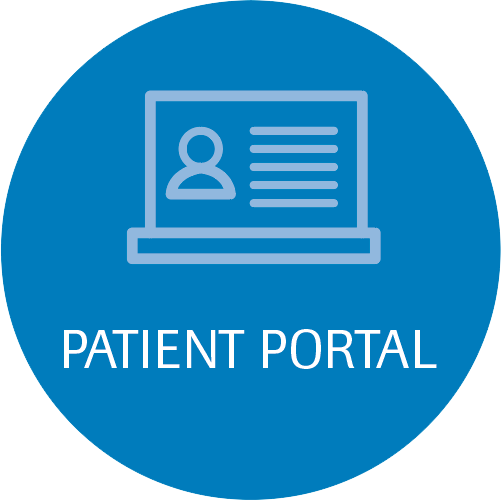What is a Stereotactic Breast Biopsy and what does it do?
Lumps or abnormalities in the breast are often detected by physical examination, mammography, or other imaging studies. However, it is not always possible to tell from these imaging tests whether a growth is non-cancerous (benign) or cancerous.
A breast biopsy is performed to remove some cells from the suspicious area in the breast to send to a lab to analyze and determine a diagnosis.
In stereotactic breast biopsy, a special mammography machine helps to guide the radiologist’s instruments to the suspicious area such as:
- a suspicious solid mass
- microcalcifications, a tiny cluster of small calcium deposits
- a distortion in the structure of the breast tissue
- an area of abnormal tissue change
- a new mass or area of calcium deposits is present at a previous surgery site.
Stereotactic breast biopsy is also performed when the patient or physician strongly prefers a non-surgical method of assessing a breast abnormality.
Stereotactic guidance is used in two biopsy procedures:
- In a core needle biopsy (CN), the automated mechanism is activated, moving the needle forward and filling the needle trough, or shallow receptacle, with ‘cores’ of breast tissue. The outer sheath instantly moves forward to cut the tissue and keep it in the trough. This process is repeated three to six times.
- With a vacuum-assisted device (VAD), vacuum pressure is used to pull tissue from the breast through the needle into the sampling chamber. Without withdrawing and reinserting the needle, it rotates positions and collects additional samples. Typically, eight to 10 samples of tissue are collected from around the lesion.
Who performs the test?
The examination is performed by a licensed Radiologic Technologist.
Where does it take place?
Jackson Hospital Outpatient Center, Hudnall Building, Room 110, located adjacent to the Hospital.
How long does it take?
The average person takes 30 minutes to an hour.
What can I do to make it a success?
Please bring physician orders to your appointment. Inform technologist prior to exam if there is a possibility of pregnancy.
What should I do before the exam?
There are several things you can do to make your procedure easier and more efficient:
- Discuss any medication you are taking with your physician. You may be asked to discontinue the use of blood-thinning medications, including aspirin and aspirin-like products, a number of days prior to your biopsy procedure.
- Wear clothing that is comfortable and easy to remove.
- Avoid the use of deodorant, underarm powders or creams before the procedure. They may interfere with the quality of the images taken during your procedure.
- Eat a light meal before your procedure.
What happens during the exam?
- Image-guided, minimally invasive procedures such as stereotactic breast biopsy are most often performed by a specially trained radiologist or surgeon.
- Breast biopsies are usually done on an outpatient basis.
- You will lie face down on a moveable exam table and the affected breast or breasts will be positioned into openings in the table.
- The table is then raised and the procedure is then performed beneath it.
- The breast is compressed and held in position throughout the procedure.
- A local anesthetic will be injected into the breast to numb it.
- Several stereotactic pairs of x-ray images are taken.
- A very small nick is made in the skin at the site where the biopsy needle is to be inserted.
- The radiologist or surgeon then inserts the needle and advances it to the location of the abnormality using the x-ray and computer generated coordinates. X-ray images are again obtained to confirm that the needle tip is actually within the lesion.
Tissue samples are then removed using a vacuum-assisted device (VAD) where vacuum pressure is used to pull tissue from the breast through the needle into the sampling chamber. Without withdrawing and reinserting the needle, it rotates positions and collects additional samples. Typically, eight to 10 samples of tissue are collected from around the lesion.
After the sampling, the needle will be removed and a final set of images will be taken. A small marker may be placed at the site so that it can be located in the future if necessary.
Once the biopsy is complete, pressure will be applied to stop any bleeding and the opening in the skin is covered with a dressing. No sutures are needed.
A mammogram may be performed to confirm that the marker is in the proper position. This procedure is usually completed within an hour.
What should I do after the exam?
A radiologist will then examine the images and interpret them. He will communicate the results and forward a report to your doctor.
- Please wear a snug-fitting bra after your procedure to help maintain pressure on the biopsy site. It is advised that you also sleep in your bra for the first night to help restrain movement of the breast.
- Apply a soft cold pack or frozen vegetable bag to the breast every ½ hour on/off for 6 to 8 hours following the biopsy procedure. This will help reduce swelling and bruising although, note, a modest amount of swelling and bruising is normal and expected.
- If you experience discomfort, you make take Tylenol (1-2 tablets) every 4-6 hours. Please DO NOT TAKE ANY ASPIRIN or NSAIDS (Advil, Motrin, Ibuprofen, Naprosyn etc) as it may promote bleeding. You may resume these products 48 hours after the biopsy.
- Most women do not find it necessary to restrict their normal activity after the procedure. You may resume your regular work/activity if you are feeling well. Very strenuous activity such as aerobics, jogging, vacuuming etc., should be delayed for 48 hours. No swimming, sauna or hot tub for one week.
- You may notice bruising in the area of the biopsy and/or on the underside of your breast. This is normal and should resolve within 1-2 weeks.
- After the biopsy, multiple small adhesive steri-strips will be placed directly on the skin and covered with a small dressing. Keep the dressing in place and dry for 24 hours.
- After 24 hours, you may remove the outer dressing and shower. Do not scrub the steri-strips, gently pat the area dry. The steri-strips will come off the skin, usually within a week.
If you have any questions, concerns or notice excessive bleeding, draining, swelling, redness, heat or fever, please contact your doctor immediately for instructions.
Contact Information:
Emergency Room: (850) 718-2561
Hospital (main operator): (850) 526-2200
Mammography Department at OP Center: (850) 718-2585 or (850) 718-2595
Fax (OP Center): (850) 718-2573
Radiology Department (at hospital): (850) 718-2580





